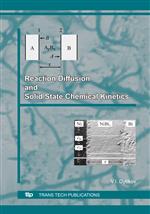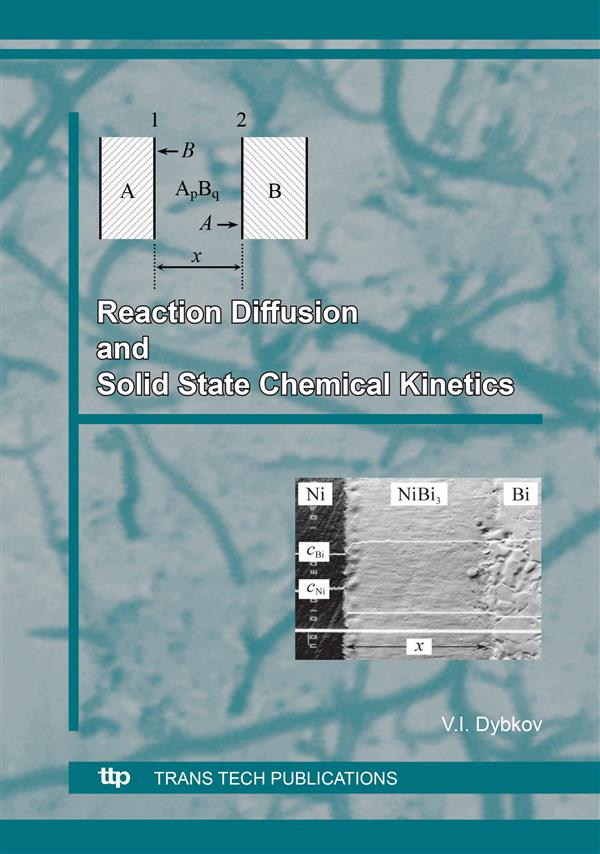Engineering Research
Materials Science
Engineering Series
Reaction Diffusion and Solid State Chemical Kinetics
Description:
This monograph deals with a physico-chemical approach to the problem of the solid-state growth of chemical compound layers and reaction-diffusion in binary heterogeneous systems formed by two solids; as well as a solid with a liquid or a gas. It is explained why the number of compound layers growing at the interface between the original phases is usually much lower than the number of chemical compounds in the phase diagram of a given binary system. For example, of the eight intermetallic compounds which exist in the aluminium-zirconium binary system, only ZrAl3 was found to grow as a separate layer at the Al–Zr interface under isothermal conditions. The physico-chemical approach predicts that, in most cases, the number of compound layers should not exceed two; with the main factor, resulting in the appearance of additional layers, being crack formation due to thermal expansion and volume effects.
Purchase this book:
Info:
Review from Ringgold Inc., ProtoView:
For scientists, engineers, and graduate students involved in the study of solid-state processes and their applications, Dybkov (physical chemistry of inorganic materials, National Academy of Sciences of Ukraine) outlines a physico-chemical approach to the problem of solid-state growth of chemical compound layers and reaction diffusion in binary heterogeneous systems formed by two solids or a solid with a liquid or a gas. He shows how experimentally observed kinetic dependences of the layer thickness upon time can be derived from a single theoretical viewpoint. He discusses the reasons for the kinetic instability of the layers of chemical compounds that may result in their gradual degradation; a comparative analysis of growth kinetics of the same compound layer in various reaction couples; mathematical expressions relating the growth rate of the layer in one of the couples to that in the others; the formation of duplex structures in these couples; dissolution in the solid-liquid systems and evaporation in the solid-gas systems in determining the layer-growth rate; and the reasons for the difference in values of reaction and self-diffusion coefficients of the components of a chemical compound.

